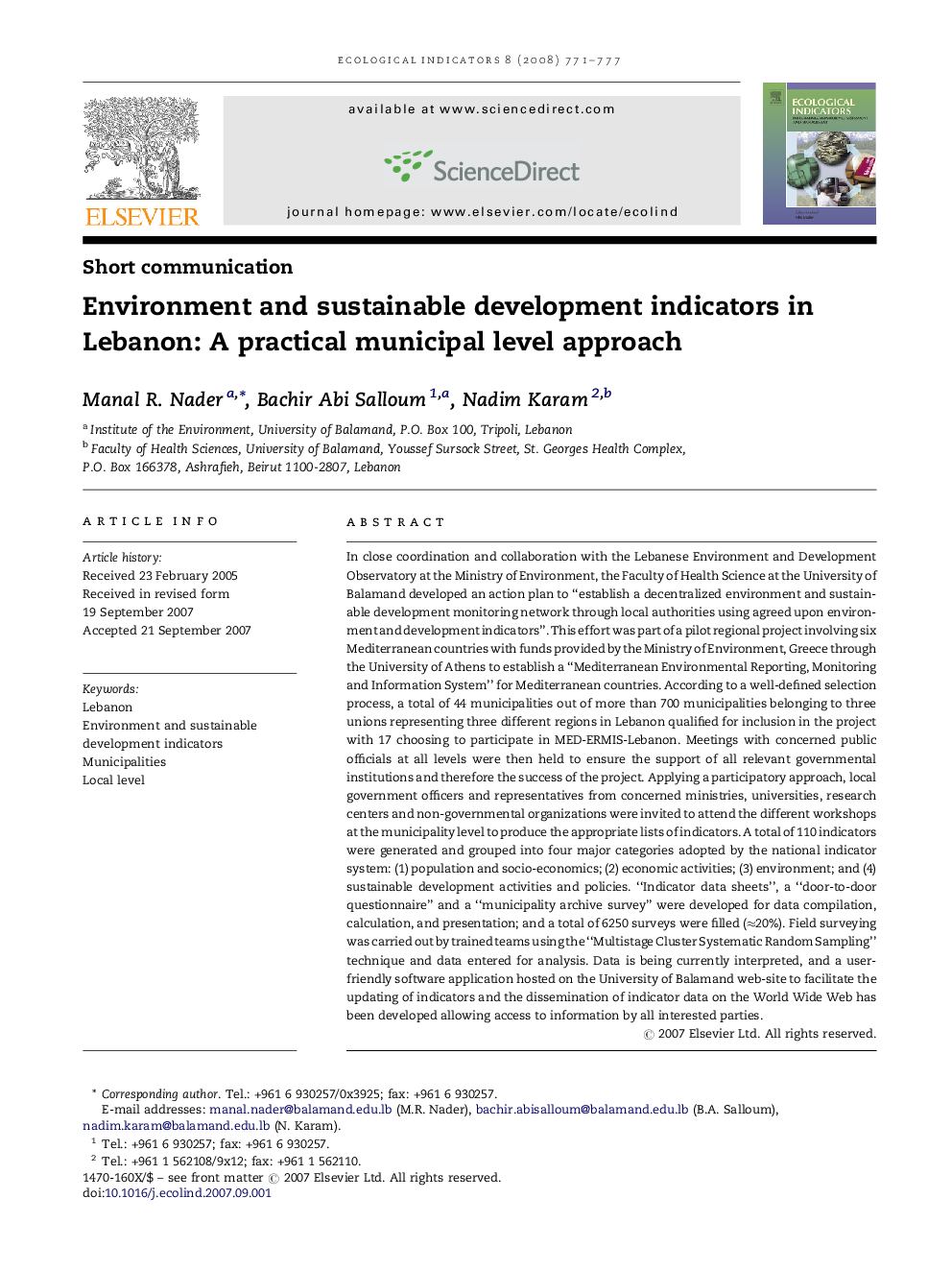| Article ID | Journal | Published Year | Pages | File Type |
|---|---|---|---|---|
| 4374420 | Ecological Indicators | 2008 | 7 Pages |
Abstract
In close coordination and collaboration with the Lebanese Environment and Development Observatory at the Ministry of Environment, the Faculty of Health Science at the University of Balamand developed an action plan to “establish a decentralized environment and sustainable development monitoring network through local authorities using agreed upon environment and development indicators”. This effort was part of a pilot regional project involving six Mediterranean countries with funds provided by the Ministry of Environment, Greece through the University of Athens to establish a “Mediterranean Environmental Reporting, Monitoring and Information System” for Mediterranean countries. According to a well-defined selection process, a total of 44 municipalities out of more than 700 municipalities belonging to three unions representing three different regions in Lebanon qualified for inclusion in the project with 17 choosing to participate in MED-ERMIS-Lebanon. Meetings with concerned public officials at all levels were then held to ensure the support of all relevant governmental institutions and therefore the success of the project. Applying a participatory approach, local government officers and representatives from concerned ministries, universities, research centers and non-governmental organizations were invited to attend the different workshops at the municipality level to produce the appropriate lists of indicators. A total of 110 indicators were generated and grouped into four major categories adopted by the national indicator system: (1) population and socio-economics; (2) economic activities; (3) environment; and (4) sustainable development activities and policies. “Indicator data sheets”, a “door-to-door questionnaire” and a “municipality archive survey” were developed for data compilation, calculation, and presentation; and a total of 6250 surveys were filled (â20%). Field surveying was carried out by trained teams using the “Multistage Cluster Systematic Random Sampling” technique and data entered for analysis. Data is being currently interpreted, and a user-friendly software application hosted on the University of Balamand web-site to facilitate the updating of indicators and the dissemination of indicator data on the World Wide Web has been developed allowing access to information by all interested parties.
Keywords
Related Topics
Life Sciences
Agricultural and Biological Sciences
Ecology, Evolution, Behavior and Systematics
Authors
Manal R. Nader, Bachir Abi Salloum, Nadim Karam,
